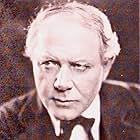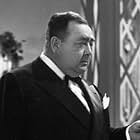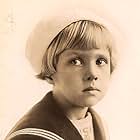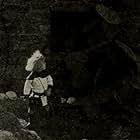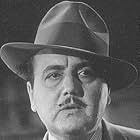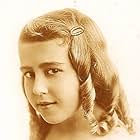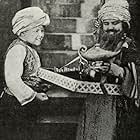A kind Dutch immigrant and her bumbling father are blackmailed by a gang of counterfeiters.A kind Dutch immigrant and her bumbling father are blackmailed by a gang of counterfeiters.A kind Dutch immigrant and her bumbling father are blackmailed by a gang of counterfeiters.
Beulah Burns
- A Garrity Kid
- (uncredited)
Francis Carpenter
- A Garrity Kid
- (uncredited)
Gino Corrado
- Wedding Guest
- (uncredited)
'Baby' Carmen De Rue
- A Garrity Kid
- (uncredited)
Hazel Hanson
- A Dutch Girl
- (uncredited)
Violet Radcliffe
- A Garrity Kid
- (uncredited)
Tom Spencer
- A Garrity Kid
- (uncredited)
- Directors
- Writer
- All cast & crew
- Production, box office & more at IMDbPro
Storyline
Did you know
- TriviaOne of the films in the 3-disk boxed DVD set called "More Treasures from American Film Archives (2004)", compiled by the National Film Preservation Foundation from 5 American film archives. This film is preserved by the UCLA Film and Television Archives, has a running time of 58 minutes and an added piano score.
- Crazy creditsExcept for Dorothy Gish whose name appears above the title, actors were not originally credited in this movie at the start or at the end. Instead, 6 additional actors and their character names are credited in the intertitles right before they appear on-screen and are listed in the same order in the IMDb cast. All other actors, most of whom were obtained from other printed publications, are marked uncredited.
Featured review
When the only known print of this film was found in a barn in Washington state several years ago it was a happy discovery for several reasons. First, Gretchen the Greenhorn is one of the few surviving features in which Dorothy Gish stars, solo—that is, without her sister Lillian. It is also a rare example of the collaborative work of brothers Chester and Sidney Franklin, who directed some twenty films together in the silent era; Sidney went on to have a long and distinguished Hollywood career as a director and producer. It's also one of the comparatively few surviving products of the Fine Art Film Co., an organization supervised by D.W. Griffith during the period he was releasing his work through the Triangle Corporation. Griffith's name does not appear in the credits, and he may have made little or no contribution, but a number of directorial touches suggest the influence of his Biograph shorts, and there are several Biograph veterans in the cast, including Miss Gish, Ralph Lewis, Kate Bruce, and Elmo Lincoln, while featured player Eugene Palette acted in this film just after finishing his role in Griffith's Intolerance.
But in addition to all the historical background there is a simpler reason we can celebrate the discovery of Gretchen the Greenhorn: it's a charming movie, skillfully crafted with a degree of cinematic sophistication impressive for its time, the kind of movie that comes as a pleasant surprise to modern day viewers unfamiliar with silent films. It was not a major release but rather a "programmer," a second tier feature of the sort that would later be termed a B-picture, and yet like the best B-pictures of the '30s and '40s it tells its story briskly and entertainingly, with some technical flourishes we don't expect to find in a modestly-budgeted production.
The plot is easily summarized: Dorothy Gish plays the title character, a girl from Holland who emigrates to America to join her father, Jan, who is struggling to establish himself in business as an engraver. They live in an urban neighborhood (presumably in New York, although this is never specified) where people of all backgrounds struggle to get by. Gretchen is courted by a young Italian, Pietro, who lives across the hall, and she unofficially adopts an Irish boy, Mickey, who lives nearby. When Jan naively allows himself to be used by a gang of counterfeiters the well-being of Gretchen and her little family is threatened, but in the end the neighbors rally to protect them, and the crooks are defeated.
One of the most interesting aspects of this film is its rich depiction of tenement life. The city's immigrant culture is presented with what feels like documentary realism, stylized to be sure but grittier than what we see in later Hollywood films, and presented without undue squalor or sentimentality. In Gretchen's neighborhood Dutch immigrants intermingle with Italians, Irish, Asians, and African Americans, and for the most part the film is free of the racial stereotyping that mars a lot of early films for today's viewers. The ethnic melting pot atmosphere is nicely captured in an amusing title card describing Pietro's serenade: "He woos her with her native Dutch songs, sung in English with an Italian accent."
This film was made before "Hollywood" meant artificial studio sets and rear projection, so most of the scenes (whether in alleys, on rooftops, or on shipboard) were taken in actual locations. The cinematography is excellent, with natural light and shadows used for striking compositions. Color tints were utilized for some scenes, and happily these tints are still evident in the surviving print. Two other photographic techniques, though dated, are nonetheless effective: the framing of facial close-ups on solid black backdrops, and the use of a "masking iris" to highlight key portions of the image. The most fascinating cinematic effect is saved for the wedding finale, which was filmed entirely in a series of close-ups on black backgrounds and edited into a rapid montage. This is the kind of bravura experimentation usually associated with the German Expressionist classics of the '20s, and it concludes Gretchen the Greenhorn on an exhilarating note.
Dorothy Gish gives a charming, low-key performance, and the other players seem to follow her lead: there is no sign of the mugging or arm-waving histrionics so often associated with silent era acting. Eugene Palette, remembered mainly as a rotund, bullfrog-voiced character actor in such comedy classics as My Man Godfrey and The Lady Eve, is surprisingly forceful—and slim!—as the villainous gang leader, Rogers. The stolid ship captain in cahoots with Rogers is played by Elmo Lincoln, two years before he earned screen (and trivia question) immortality as the cinema's first Tarzan.
In sum, there are a number of reasons to be grateful that this entertaining and interesting film was recovered from that barn in Washington. One especially good reason, especially if you own property in the area, is that a few tins of 35mm nitrate stock could easily have blown that barn sky high, and scorched the countryside for miles around! What were those tins doing in a barn in the first place?!?
But in addition to all the historical background there is a simpler reason we can celebrate the discovery of Gretchen the Greenhorn: it's a charming movie, skillfully crafted with a degree of cinematic sophistication impressive for its time, the kind of movie that comes as a pleasant surprise to modern day viewers unfamiliar with silent films. It was not a major release but rather a "programmer," a second tier feature of the sort that would later be termed a B-picture, and yet like the best B-pictures of the '30s and '40s it tells its story briskly and entertainingly, with some technical flourishes we don't expect to find in a modestly-budgeted production.
The plot is easily summarized: Dorothy Gish plays the title character, a girl from Holland who emigrates to America to join her father, Jan, who is struggling to establish himself in business as an engraver. They live in an urban neighborhood (presumably in New York, although this is never specified) where people of all backgrounds struggle to get by. Gretchen is courted by a young Italian, Pietro, who lives across the hall, and she unofficially adopts an Irish boy, Mickey, who lives nearby. When Jan naively allows himself to be used by a gang of counterfeiters the well-being of Gretchen and her little family is threatened, but in the end the neighbors rally to protect them, and the crooks are defeated.
One of the most interesting aspects of this film is its rich depiction of tenement life. The city's immigrant culture is presented with what feels like documentary realism, stylized to be sure but grittier than what we see in later Hollywood films, and presented without undue squalor or sentimentality. In Gretchen's neighborhood Dutch immigrants intermingle with Italians, Irish, Asians, and African Americans, and for the most part the film is free of the racial stereotyping that mars a lot of early films for today's viewers. The ethnic melting pot atmosphere is nicely captured in an amusing title card describing Pietro's serenade: "He woos her with her native Dutch songs, sung in English with an Italian accent."
This film was made before "Hollywood" meant artificial studio sets and rear projection, so most of the scenes (whether in alleys, on rooftops, or on shipboard) were taken in actual locations. The cinematography is excellent, with natural light and shadows used for striking compositions. Color tints were utilized for some scenes, and happily these tints are still evident in the surviving print. Two other photographic techniques, though dated, are nonetheless effective: the framing of facial close-ups on solid black backdrops, and the use of a "masking iris" to highlight key portions of the image. The most fascinating cinematic effect is saved for the wedding finale, which was filmed entirely in a series of close-ups on black backgrounds and edited into a rapid montage. This is the kind of bravura experimentation usually associated with the German Expressionist classics of the '20s, and it concludes Gretchen the Greenhorn on an exhilarating note.
Dorothy Gish gives a charming, low-key performance, and the other players seem to follow her lead: there is no sign of the mugging or arm-waving histrionics so often associated with silent era acting. Eugene Palette, remembered mainly as a rotund, bullfrog-voiced character actor in such comedy classics as My Man Godfrey and The Lady Eve, is surprisingly forceful—and slim!—as the villainous gang leader, Rogers. The stolid ship captain in cahoots with Rogers is played by Elmo Lincoln, two years before he earned screen (and trivia question) immortality as the cinema's first Tarzan.
In sum, there are a number of reasons to be grateful that this entertaining and interesting film was recovered from that barn in Washington. One especially good reason, especially if you own property in the area, is that a few tins of 35mm nitrate stock could easily have blown that barn sky high, and scorched the countryside for miles around! What were those tins doing in a barn in the first place?!?
Details
- Release date
- Country of origin
- Languages
- Also known as
- Gretchen Blunders In
- Filming locations
- Production company
- See more company credits at IMDbPro
- Runtime58 minutes
- Color
- Sound mix
- Aspect ratio
- 1.33 : 1
Contribute to this page
Suggest an edit or add missing content

Top Gap
By what name was Gretchen the Greenhorn (1916) officially released in Canada in English?
Answer








